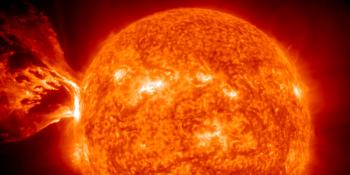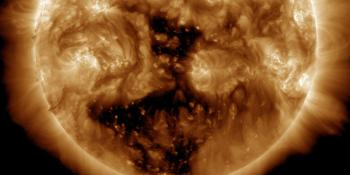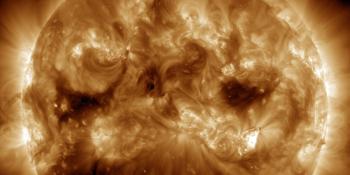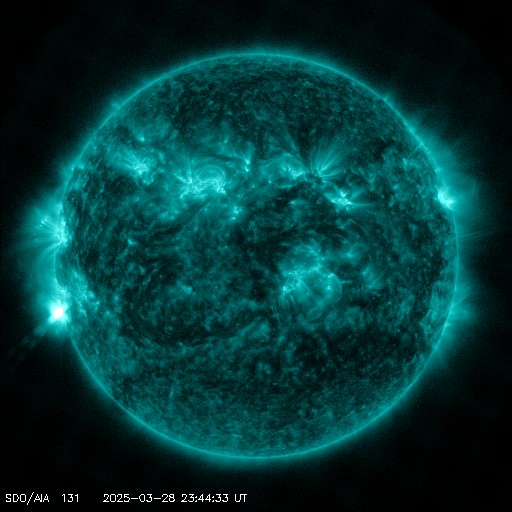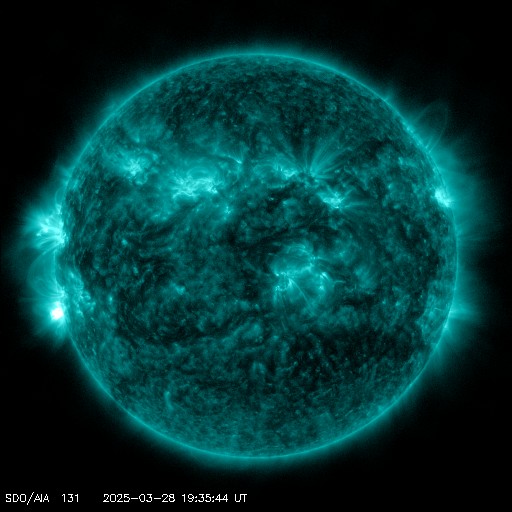Viewing archive of Monday, 24 February 2014
Geophysical report
Any mentioned solar flare in this report has a scaling factor applied by the Space Weather Prediction Center (SWPC). Because of the SWPC scaling factor, solar flares are reported as 42% smaller than for the science quality data. The scaling factor has been removed from our archived solar flare data to reflect the true physical units.
Solar and Geophysical Activity Summary 2014 Feb 24 0245 UTCPrepared by the NOAA © SWPC and processed by SpaceWeatherLive.com
Joint USAF/NOAA Solar and Geophysical Activity Summary
SGAS Number 055 Issued at 0245Z on 24 Feb 2014 This report is compiled from data received at SWO on 23 FebA. Energetic Events
Begin Max End Rgn Loc Xray Op 245MHz 10cm Sweep 0550 0610 0636 M1.1 2008 2008 2008 190 2016 2016 2016 270
B. Proton Events
None
C. Geomagnetic Activity Summary
The geomagnetic field ranged from
quiet to active levels, with minor to major storm levels observed at
high latitudes.
D. Stratwarm
Not available
E. Daily Indices: (real-time preliminary/estimated values)
10 cm 172 SSN 185 Afr/Ap 012/017 X-ray Background B9.9 Daily Proton Fluence (flux accumulation over 24 hrs) GT 1 MeV 5.4e+05 GT 10 MeV 1.0e+04 p/(cm2-ster-day) (GOES-13 satellite synchronous orbit W75 degrees) Daily Electron Fluence GT 2 MeV 5.10e+07 e/(cm2-ster-day) (GOES-13 satellite synchronous orbit W75 degrees) 3 Hour K-indices Boulder 1 1 3 2 3 4 4 3 Planetary 1 2 3 2 2 4 5 4
F. Comments
None
All times in UTC
Current data suggests there is a slight possibility for aurora to appear at the following high latitude regions in the near future
Murmansk, VorkutaLatest news
Latest forum messages
AR4046 127Incoming & Unnumbered Active Regions 1657Aurora photography hints for those of us with smartphones 49Large Coronal Hole 25 178LASCO Data Not Updating 5
More topicsSupport SpaceWeatherLive.com!
A lot of people come to SpaceWeatherLive to follow the Sun's activity or if there is aurora to be seen, but with more traffic comes higher server costs. Consider a donation if you enjoy SpaceWeatherLive so we can keep the website online!

Latest alerts
00:00 UTC - Solar flare
Moderate M1.79 flare
Friday, 28 March 2025
23:36 UTC - Radio Blackout
Minor R1 radio blackout in progress (≥M1 - current: M1.04)
21:24 UTC - Hemispheric Power Index
The OVATION model predicts the Hemispheric Power Index to reach 51GW at 21:59 UTC
19:45 UTC - Solar flare
Moderate M1.16 flare
19:27 UTC - Radio Blackout
Minor R1 radio blackout in progress (≥M1 - current: M1.1)
Space weather facts
| Last X-flare | 2025/03/28 | X1.1 |
| Last M-flare | 2025/03/28 | M1.7 |
| Last geomagnetic storm | 2025/03/27 | Kp5 (G1) |
| Spotless days | |
|---|---|
| Last spotless day | 2022/06/08 |
| Monthly mean Sunspot Number | |
|---|---|
| February 2025 | 154.6 +17.6 |
| March 2025 | 128.3 -26.4 |
| Last 30 days | 128.3 -23.7 |
